#solarpunk
Text
I’ve teased it. You’ve waited. I’ve procrastinated. You’ve probably forgotten all about it.
But now, finally, I’m here with my solarpunk resources masterpost!
YouTube Channels:
Andrewism
The Solarpunk Scene
Solarpunk Life
Solarpunk Station
Our Changing Climate
Podcasts:
The Joy Report
How To Save A Planet
Demand Utopia
Solarpunk Presents
Outrage and Optimisim
From What If To What Next
Solarpunk Now
Idealistically
The Extinction Rebellion Podcast
The Landworkers' Radio
Wilder
What Could Possibly Go Right?
Frontiers of Commoning
The War on Cars
The Rewild Podcast
Books (Fiction):
Ursula K. Le Guin: The Left Hand of Darkness The Dispossessed The Word for World is Forest
Becky Chambers: A Psalm for the Wild-Built A Prayer for the Crown-Shy
Phoebe Wagner: When We Hold Each Other Up
Phoebe Wagner, Bronte Christopher Wieland: Sunvault: Stories of Solarpunk and Eco-Speculation
Brenda J. Pierson: Wings of Renewal: A Solarpunk Dragon Anthology
Gerson Lodi-Ribeiro: Solarpunk: Ecological and Fantastical Stories in a Sustainable World
Justine Norton-Kertson: Bioluminescent: A Lunarpunk Anthology
Sim Kern: The Free People’s Village
Ruthanna Emrys: A Half-Built Garden
Sarina Ulibarri: Glass & Gardens
Books (Non-fiction):
Murray Bookchin: The Ecology of Freedom
George Monbiot: Feral
Miles Olson: Unlearn, Rewild
Mark Shepard: Restoration Agriculture
Kristin Ohlson: The Soil Will Save Us
Rowan Hooper: How To Spend A Trillion Dollars
Anna Lowenhaupt Tsing: The Mushroom At The End of The World
Kimberly Nicholas: Under The Sky We Make
Robin Wall Kimmerer: Braiding Sweetgrass
David Miller: Solved
Ayana Johnson, Katharine Wilkinson: All We Can Save
Jonathan Safran Foer: We Are The Weather
Colin Tudge: Six Steps Back To The Land
Edward Wilson: Half-Earth
Natalie Fee: How To Save The World For Free
Kaden Hogan: Humans of Climate Change
Rebecca Huntley: How To Talk About Climate Change In A Way That Makes A Difference
Christiana Figueres, Tom Rivett-Carnac: The Future We Choose
Jonathon Porritt: Hope In Hell
Paul Hawken: Regeneration
Mark Maslin: How To Save Our Planet
Katherine Hayhoe: Saving Us
Jimmy Dunson: Building Power While The Lights Are Out
Paul Raekstad, Sofa Saio Gradin: Prefigurative Politics
Andreas Malm: How To Blow Up A Pipeline
Phoebe Wagner, Bronte Christopher Wieland: Almanac For The Anthropocene
Chris Turner: How To Be A Climate Optimist
William MacAskill: What We Owe To The Future
Mikaela Loach: It's Not That Radical
Miles Richardson: Reconnection
David Harvey: Spaces of Hope Rebel Cities
Eric Holthaus: The Future Earth
Zahra Biabani: Climate Optimism
David Ehrenfeld: Becoming Good Ancestors
Stephen Gliessman: Agroecology
Chris Carlsson: Nowtopia
Jon Alexander: Citizens
Leah Thomas: The Intersectional Environmentalist
Greta Thunberg: The Climate Book
Jen Bendell, Rupert Read: Deep Adaptation
Seth Godin: The Carbon Almanac
Jane Goodall: The Book of Hope
Vandana Shiva: Agroecology and Regenerative Agriculture
Amitav Ghosh: The Great Derangement
Minouche Shafik: What We Owe To Each Other
Dieter Helm: Net Zero
Chris Goodall: What We Need To Do Now
Aldo Leopold: A Sand County Almanac
Jeffrey Jerome Cohen, Stephanie Foote: The Cambridge Companion To The Environmental Humanities
Bella Lack: The Children of The Anthropocene
Hannah Ritchie: Not The End of The World
Chris Turner: How To Be A Climate Optimist
Kim Stanley Robinson: Ministry For The Future
Fiona Mathews, Tim Kendall: Black Ops & Beaver Bombing
Jeff Goodell: The Water Will Come
Lynne Jones: Sorry For The Inconvenience But This Is An Emergency
Helen Crist: Abundant Earth
Sam Bentley: Good News, Planet Earth!
Timothy Beal: When Time Is Short
Andrew Boyd: I Want A Better Catastrophe
Kristen R. Ghodsee: Everyday Utopia
Elizabeth Cripps: What Climate Justice Means & Why We Should Care
Kylie Flanagan: Climate Resilience
Chris Johnstone, Joanna Macy: Active Hope
Mark Engler: This is an Uprising
Anne Therese Gennari: The Climate Optimist Handbook
Magazines:
Solarpunk Magazine
Positive News
Resurgence & Ecologist
Ethical Consumer
Films (Fiction):
How To Blow Up A Pipeline
The End We Start From
Woman At War
Black Panther
Star Trek
Tomorrowland
Films (Documentary):
2040: How We Can Save The Planet
The People vs Big Oil
Wild Isles
The Boy Who Harnessed The Wind
Generation Green New Deal
Video Games:
Terra Nil
Animal Crossing
Gilded Shadows
Anno 2070
Stardew Valley
RPGs:
Solarpunk Futures
Perfect Storm
Advocacy Groups:
A22 Network
Extinction Rebellion
Greenpeace
Friends of The Earth
Apps:
Ethy
Sojo
BackMarket
Depop
Vinted
Olio
Buy Nothing
Too Good To Go
Websites:
European Co-housing
UK Co-housing
US Co-housing
Brought By Bike (connects you with zero-carbon delivery goods)
ClimateBase (find a sustainable career)
Environmentjob (ditto)
Businesses (🤢):
Ethical Superstore
Hodmedods
Fairtransport/Sail Cargo Alliance
Let me know if you think there’s anything I’ve missed!
#solarpunk#hopepunk#cottagepunk#environmentalism#social justice#community#optimism#bright future#climate justice#tidalpunk#turbinepunk#resources#masterpost#books#films#magazines#podcasts#apps
197 notes
·
View notes
Text










By jilt with stablediffusion
Cyberpunk art commissions
Ko-Fi
My ai workflows
#nestedneons#cyberpunk#cyberpunk art#cyberpunk aesthetic#art#cyberpunk artist#cyberwave#megacity#futuristic city#scifi#pirple#purple art#purplecore#purple aesthetic#neonwave#neoncore#neon city#vaporwave#vaporpunk#urban decay#urban jungle#neon aesthetic#retro scifi#bioluminecent#bioluminescence#solarpunk#scifi aesthetic#scifi art#ai art#thisisaiart
78 notes
·
View notes
Text

Comparative anatomy.
I’ve always wanted to make something inspired by old field guides and anatomical drawings.


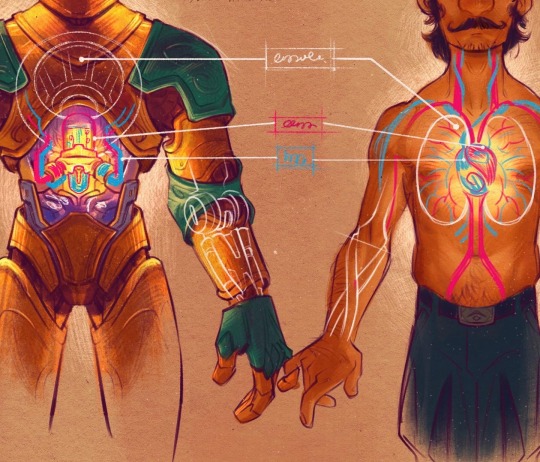
60 notes
·
View notes
Text
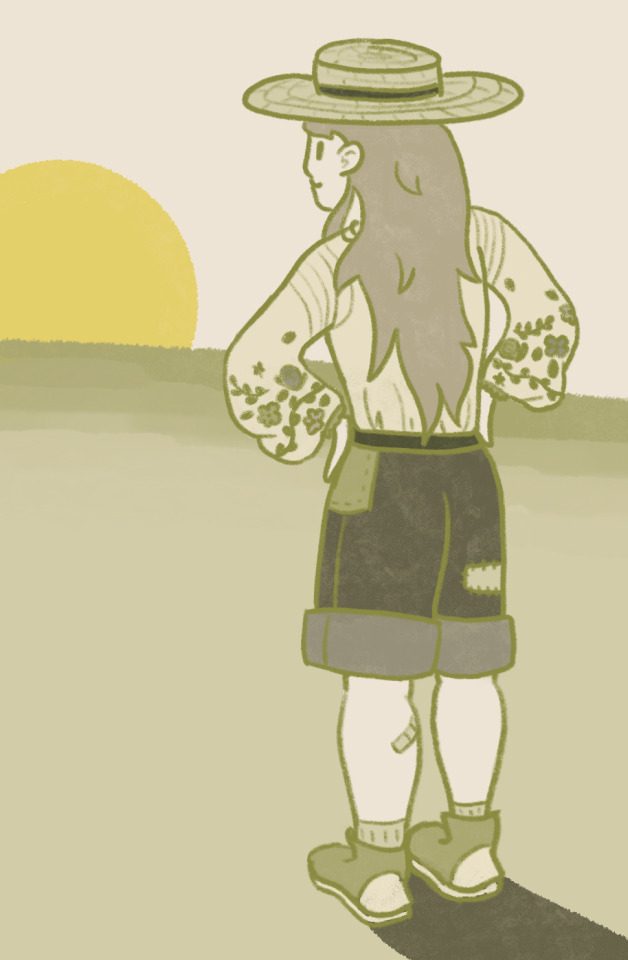
Hermit-a-day May, day 11, PearlescentMoon
A simple take on solarpunk Pearl!
[ID: monochromatic digital art of PearlescentMoon, in shades of green. Pearl is standing with her back to the viewer, looking out towards the sun in the background with her hands on her hips. She is wearing a straw hat, a loose shirt with embroidered sleeves, and patched shorts. End ID]
65 notes
·
View notes
Text
#mob psycho 100#trump#use my pussy#the night manager#freaks and geeks#femme lesbian#y2kcore#av#feysand#solarpunk
129 notes
·
View notes
Text
You can now apply to be one of the first members of the American Climate Corps.
“You’ll get paid to fight climate change, learning how to install those solar panels, fight wildfires, rebuild wetlands, weatherize homes, and so much more,” Biden said at a press conference on Monday at Virginia’s Prince William Forest Park, originally built in 1936 by President Franklin D. Roosevelt’s Civilian Conservation Corps, a model for the Biden administration’s new program. “It’s going to protect the environment to build a clean energy economy.”
101 notes
·
View notes
Text
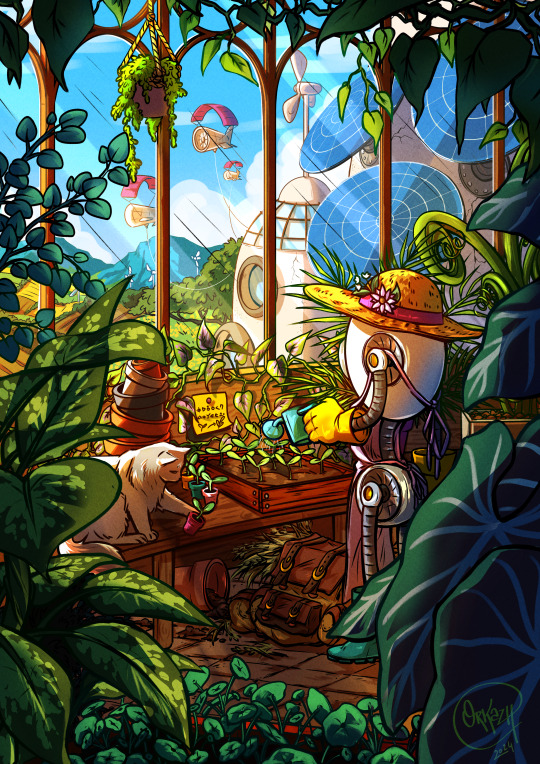
Oh to be a gardener robot with a pet cat living in a solarpunk world and taking care of little plants... ☀️🌿
[My piece for the #WeekAndArt2024 event, a French online art contest]
#solarpunk#wat2024#weekandart2024#utopy#gardener robot#greenhouse#sci-fi#sff#future#futuristic architecture#plants#solarpunk aesthetic#scifi aesthetic#sci-fi aesthetic#robot#cat
33 notes
·
View notes
Text
Two men who were instrumental in creating a global seed vault designed to safeguard the world's agricultural diversity will be honoured as the 2024 World Food Prize laureates.
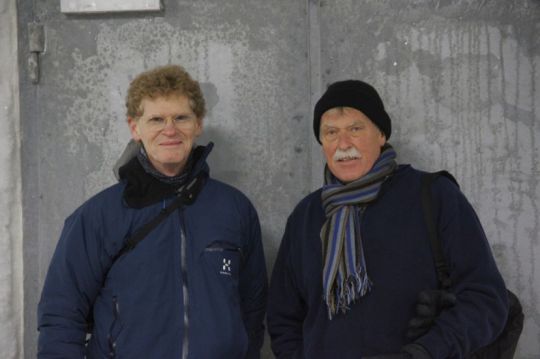
Cary Fowler, the US special envoy for Global Food Security, and Geoffrey Hawtin, an agricultural scientist from the UK and executive board member at the Global Crop Diversity Trust, will be awarded the annual prize and split a $500,000 (€464,000) award. In 2004, Fowler and Hawtin led the effort to build a backup vault of the world's crop seeds in a place where it could be safe from political upheaval and environmental changes.

The facility was built into the side of a mountain on a Norwegian island in the Arctic Circle where temperatures could ensure seeds would be preserved.
The Svalbard Global Seed Vault - also known as the 'Doomsday vault' - opened in 2008 and now holds 1.25 million seed samples from nearly every country in the world.
#solarpunk#solar punk#indigenous knowledge#community#reculture#seed vault#svalbard#global food prize#preserving the future
36 notes
·
View notes
Text
Poached-egg Pollinator Paradise

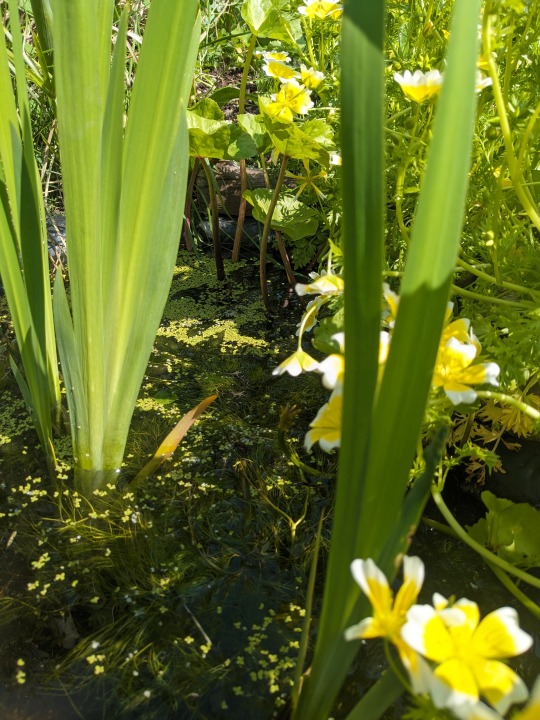
There is a patch of poached-egg flowers growing next to my pond. Pollinating insects love it, and I love to watch them. Here are a few of this weekend's visitors.


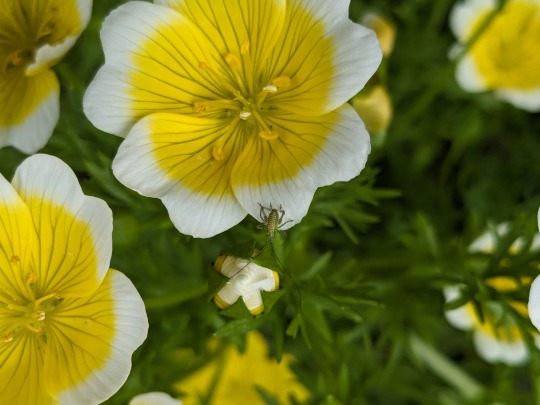


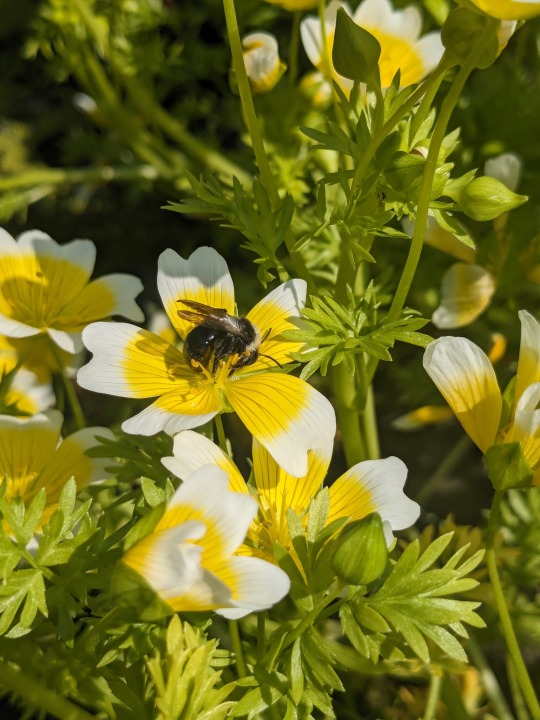
??
Mint moth
??
Honeybee
Rose chafer beetle
Ashy mining bee
If you are familiar with bugs 1 and 3, please let me know their names! And grow this plant if you can!
#pollinators#pollinating insects#bug identification#tw: bugs#gardening#urban gardening#small space garden#solarpunk#permaculture
52 notes
·
View notes
Photo

Artist
#solarpunk#solar punk#anime#anime art#environment design#environment art#fantasy art#fantasy illustration
34 notes
·
View notes
Text
#haikyuu angst#grunge#ouran high school host club#emily elizabeth#i sell pictures#dreamtale#y2kcore#nintendo#dark horse comics#solarpunk#stevie nicks#lesbian goals
39 notes
·
View notes
Text










By jilt with stablediffusion
Cyberpunk art commissions
Ko-Fi
My ai workflows
#nestedneons#cyberpunk#cyberpunk art#cyberpunk aesthetic#art#cyberpunk artist#cyberwave#megacity#futuristic city#scifi#solarpunk#suburbanliving#suburbia#suburbcore#neon city#neon art#neoncore#neon aesthetic#synthwave#neonwave#cyberpunk neon city#kowloon#scifi art#scifi aesthetic#scifi geek#vending machine#ai art#ai artwork#ai artist#thisisaiart
59 notes
·
View notes
Text
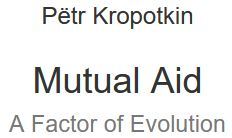
Chapter 7: Mutual Aid Amongst Ourselves (Part 2)
As to the Continent, we find the communal institutions fully alive in many parts of France, Switzerland, Germany, Italy, the Scandinavian lands, and Spain, to say nothing of Eastern Europe; the village life in these countries is permeated with communal habits and customs; and almost every year the Continental literature is enriched by serious works dealing with this and connected subjects. I must, therefore, limit my illustrations to the most typical instances. Switzerland is undoubtedly one of them. Not only the five republics of Uri, Schwytz, Appenzell, Glarus, and Unterwalden hold their lands as undivided estates, and are governed by their popular folkmotes, but in all other cantons too the village communities remain in possession of a wide self-government, and own large parts of the Federal territory.[269] Two-thirds of all the Alpine meadows and two-thirds of all the forests of Switzerland are until now communal land; and a considerable number of fields, orchards, vineyards, peat bogs, quarries, and so on, are owned in common. In the Vaud, where all the householders continue to take part in the deliberations of their elected communal councils, the communal spirit is especially alive. Towards the end of the winter all the young men of each village go to stay a few days in the woods, to fell timber and to bring it down the steep slopes tobogganing way, the timber and the fuel wood being divided among all households or sold for their benefit. These excursions are real fêtes of manly labour. On the banks of Lake Leman part of the work required to keep up the terraces of the vineyards is still done in common; and in the spring, when the thermometer threatens to fall below zero before sunrise, the watchman wakes up all householders, who light fires of straw and dung and protect their vine-trees from the frost by an artificial cloud. In nearly all cantons the village communities possess so-called Bürgernutzen — that is, they hold in common a number of cows, in order to supply each family with butter; or they keep communal fields or vineyards, of which the produce is divided between the burghers, or they rent their land for the benefit of the community.[270]
It may be taken as a rule that where the communes have retained a wide sphere of functions, so as to be living parts of the national organism, and where they have not been reduced to sheer misery, they never fail to take good care of their lands. Accordingly the communal estates in Switzerland strikingly contrast with the miserable state of “commons” in this country. The communal forests in the Vaud and the Valais are admirably managed, in conformity with the rules of modern forestry. Elsewhere the “strips” of communal fields, which change owners under the system of re-allotment, are very well manured, especially as there is no lack of meadows and cattle. The high level meadows are well kept as a rule, and the rural roads are excellent.[271] And when we admire the Swiss châlet, the mountain road, the peasants’ cattle, the terraces of vineyards, or the school-house in Switzerland, we must keep in mind that without the timber for the châlet being taken from the communal woods and the stone from the communal quarries, without the cows being kept on the communal meadows, and the roads being made and the school-houses built by communal work, there would be little to admire.
It hardly need be said that a great number of mutual-aid habits and customs continue to persist in the Swiss villages. The evening gatherings for shelling walnuts, which take place in turns in each household; the evening parties for sewing the dowry of the girl who is going to marry; the calling of “aids” for building the houses and taking in the crops, as well as for all sorts of work which may be required by one of the commoners; the custom of exchanging children from one canton to the other, in order to make them learn two languages, French and German; and so on — all these are quite habitual;[272] while, on the other side, diverse modern requirements are met in the same spirit. Thus in Glarus most of the Alpine meadows have been sold during a time of calamity; but the communes still continue to buy field land, and after the newly-bought fields have been left in the possession of separate commoners for ten, twenty, or thirty years, as the case might be, they return to the common stock, which is re-allotted according to the needs of all. A great number of small associations are formed to produce some of the necessaries for life — bread, cheese, and wine — by common work, be it only on a limited scale; and agricultural co-operation altogether spreads in Switzerland with the greatest ease. Associations formed between ten to thirty peasants, who buy meadows and fields in common, and cultivate them as co-owners, are of common occurrence; while dairy associations for the sale of milk, butter, and cheese are organized everywhere. In fact, Switzerland was the birthplace of that form of co-operation. It offers, moreover, an immense field for the study of all sorts of small and large societies, formed for the satisfaction of all sorts of modern wants. In certain parts of Switzerland one finds in almost every village a number of associations — for protection from fire, for boating, for maintaining the quays on the shores of a lake, for the supply of water, and so on; and the country is covered with societies of archers, sharpshooters, topographers, footpath explorers, and the like, originated from modern militarism.
Switzerland is, however, by no means an exception in Europe, because the same institutions and habits are found in the villages of France, of Italy, of Germany, of Denmark, and so on. We have just seen what has been done by the rulers of France in order to destroy the village community and to get hold of its lands; but notwithstanding all that one-tenth part of the whole territory available for culture, i.e. 13,500,000 acres, including one-half of all the natural meadows and nearly a fifth part of all the forests of the country, remain in communal possession. The woods supply the communers with fuel, and the timber wood is cut, mostly by communal work, with all desirable regularity; the grazing lands are free for the commoners’ cattle; and what remains of communal fields is allotted and re-allotted in certain parts Ardennes — in the usual of France — namely, in the way.[273]
These additional sources of supply, which aid the poorer peasants to pass through a year of bad crops without parting with their small plots of land and without running into irredeemable debts, have certainly their importance for both the agricultural labourers and the nearly three millions of small peasant proprietors. It is even doubtful whether small peasant proprietorship could be maintained without these additional resources. But the ethical importance of the communal possessions, small as they are, is still greater than their economical value. They maintain in village life a nucleus of customs and habits of mutual aid which undoubtedly acts as a mighty check upon the development of reckless individualism and greediness, which small land-ownership is only too prone to develop. Mutual aid in all possible circumstances of village life is part of the routine life in all parts of the country. Everywhere we meet, under different names, with the charroi, i.e. the free aid of the neighbours for taking in a crop, for vintage, or for building a house; everywhere we find the same evening gatherings as have just been mentioned in Switzerland; and everywhere the commoners associate for all sorts of work. Such habits are mentioned by nearly all those who have written upon French village life. But it will perhaps be better to give in this place some abstracts from letters which I have just received from a friend of mine whom I have asked to communicate to me his observations on this subject. They come from an aged man who for years has been the mayor of his commune in South France (in Ariëge); the facts he mentions are known to him from long years of personal observation, and they have the advantage of coming from one neighbourhood instead of being skimmed from a large area. Some of them may seem trifling, but as a whole they depict quite a little world of village life.
“In several communes in our neighbourhood,” my friend writes, “the old custom of l’emprount is in vigour. When many hands are required in a métairie for rapidly making some work — dig out potatoes or mow the grass — the youth of the neighbourhood is convoked; young men and girls come in numbers, make it gaily and for nothing; and in the evening, after a gay meal, they dance.
“In the same communes, when a girl is going to marry, the girls of the neighbourhood come to aid in sewing the dowry. In several communes the women still continue to spin a good deal. When the winding off has to be done in a family it is done in one evening — all friends being convoked for that work. In many communes of the Ariège and other parts of the south-west the shelling of the Indian corn-sheaves is also done by all the neighbours. They are treated with chestnuts and wine, and the young people dance after the work has been done. The same custom is practised for making nut oil and crushing hemp. In the commune of L. the same is done for bringing in the corn crops. These days of hard work become fête days, as the owner stakes his honour on serving a good meal. No remuneration is given; all do it for each other.[274]
“In the commune of S. the common grazing-land is every year increased, so that nearly the whole of the land of the commune is now kept in common. The shepherds are elected by all owners of the cattle, including women. The bulls are communal.
“In the commune of M. the forty to fifty small sheep flocks of the commoners are brought together and divided into three or four flocks before being sent to the higher meadows. Each owner goes for a week to serve as shepherd.
“In the hamlet of C. a threshing machine has been bought in common by several households; the fifteen to twenty persons required to serve the machine being supplied by all the families. Three other threshing machines have been bought and are rented out by their owners, but the work is performed by outside helpers, invited in the usual way.
“In our commune of R. we had to raise the wall of the cemetery. Half of the money which was required for buying lime and for the wages of the skilled workers was supplied by the county council, and the other half by subscription. As to the work of carrying sand and water, making mortar, and serving the masons, it was done entirely by volunteers [just as in the Kabyle djemmâa]. The rural roads were repaired in the same way, by volunteer days of work given by the commoners. Other communes have built in the same way their fountains. The wine-press and other smaller appliances are frequently kept by the commune.”
Two residents of the same neighbourhood, questioned by my friend, add the following: —
“At O. a few years ago there was no mill. The commune has built one, levying a tax upon the commoners. As to the miller, they decided, in order to avoid frauds and partiality, that he should be paid two francs for each bread-eater, and the corn be ground free.
“At St. G. few peasants are insured against fire. When a conflagration has taken place — so it was lately — all give something to the family which has suffered from it — a chaldron, a bed-cloth, a chair, and so on — and a modest household is thus reconstituted. All the neighbours aid to build the house, and in the meantime the family is lodged free by the neighbours.”
Such habits of mutual support — of which many more examples could be given — undoubtedly account for the easiness with which the French peasants associate for using, in turn, the plough with its team of horses, the wine-press, and the threshing machine, when they are kept in the village by one of them only, as well as for the performance of all sorts of rural work in common. Canals were maintained, forests were cleared, trees were planted, and marshes were drained by the village communities from time immemorial; and the same continues still. Quite lately, in La Borne of Lozère barren hills were turned into rich gardens by communal work. “The soil was brought on men’s backs; terraces were made and planted with chestnut trees, peach trees, and orchards, and water was brought for irrigation in canals two or three miles long.” Just now they have dug a new canal, eleven miles in length.[275]
To the same spirit is also due the remarkable success lately obtained by the syndicats agricoles, or peasants’ and farmers’ associations. It was not until 1884 that associations of more than nineteen persons were permitted in France, and I need not say that when this “dangerous experiment” was ventured upon — so it was styled in the Chambers — all due “precautions” which functionaries can invent were taken. Notwithstanding all that, France begins to be covered with syndicates. At the outset they were only formed for buying manures and seeds, falsification having attained colossal proportions in these two branches;[276] but gradually they extended their functions in various directions, including the sale of agricultural produce and permanent improvements of the land. In South France the ravages of the phylloxera have called into existence a great number of wine-growers’ associations. Ten to thirty growers form a syndicate, buy a steam-engine for pumping water, and make the necessary arrangements for inundating their vineyards in turn.[277] New associations for protecting the land from inundations, for irrigation purposes, and for maintaining canals are continually formed, and the unanimity of all peasants of a neighbourhood, which is required by law, is no obstacle. Elsewhere we have the fruitières, or dairy associations, in some of which all butter and cheese is divided in equal parts, irrespective of the yield of each cow. In the Ariège we find an association of eight separate communes for the common culture of their lands, which they have put together; syndicates for free medical aid have been formed in 172 communes out of 337 in the same department; associations of consumers arise in connection with the syndicates; and so on.[278] “Quite a revolution is going on in our villages,” Alfred Baudrillart writes, “through these associations, which take in each region their own special characters.”
“Very much the same must be said of Germany. Wherever the peasants could resist the plunder of their lands, they have retained them in communal ownership, which largely prevails in Württemberg, Baden, Hohenzollern, and in the Hessian province of Starkenberg.[279] The communal forests are kept, as a rule, in an excellent state, and in thousands of communes timber and fuel wood are divided every year among all inhabitants; even the old custom of the Lesholztag is widely spread: at the ringing of the village bell all go to the forest to take as much fuel wood as they can carry.[280] In Westphalia one finds communes in which all the land is cultivated as one common estate, in accordance with all requirements of modern agronomy. As to the old communal customs and habits, they are in vigour in most parts of Germany. The calling in of aids, which are real fêtes of labour, is known to be quite habitual in Westphalia, Hesse, and Nassau. In well-timbered regions the timber for a new house is usually taken from the communal forest, and all the neighbours join in building the house. Even in the suburbs of Frankfort it is a regular custom among the gardeners that in case of one of them being ill all come on Sunday to cultivate his garden.[281]
In Germany, as in France, as soon as the rulers of the people repealed their laws against the peasant associations — that was only in 1884–1888 — these unions began to develop with a wonderful rapidity, notwithstanding all legal obstacles which were put in their way[282]. “It is a fact,” Buchenberger says, “that in thousands of village communities, in which no sort of chemical manure or rational fodder was ever known, both have become of everyday use, to a quite unforeseen extent, owing to these associations” (vol. ii. p. 507). All sorts of labour-saving implements and agricultural machinery, and better breeds of cattle, are bought through the associations, and various arrangements for improving the quality of the produce begin to be introduced. Unions for the sale of agricultural produce are also formed, as well as for permanent improvements of the land.[283]
From the point of view of social economics all these efforts of the peasants certainly are of little importance. They cannot substantially, and still less permanently, alleviate the misery to which the tillers of the soil are doomed all over Europe. But from the ethical point of view, which we are now considering, their importance cannot be overrated. They prove that even under the system of reckless individualism which now prevails the agricultural masses piously maintain their mutual-support inheritance; and as soon as the States relax the iron laws by means of which they have broken all bonds between men, these bonds are at once reconstituted, notwithstanding the difficulties, political, economical, and social, which are many, and in such forms as best answer to the modern requirements of production. They indicate in which direction and in which form further progress must be expected.
I might easily multiply such illustrations, taking them from Italy, Spain, Denmark, and so on, and pointing out some interesting features which are proper to each of these countries.[284] The Slavonian populations of Austria and the Balkan peninsula, among whom the “compound family,” or “undivided household,” is found in existence, ought also to be mentioned.[285] But I hasten to pass on to Russia, where the same mutual-support tendency takes certain new and unforeseen forms. Moreover, in dealing with the village community in Russia we have the advantage: of possessing an immense mass of materials, collected during the colossal house-to-house inquest which was lately made by several zemstvos (county councils), and which embraces a population of nearly 20,000,000 peasants in different parts of the country.[286]
Two important conclusions may be drawn from the bulk of evidence collected by the Russian inquests. In Middle Russia, where fully one-third of the peasants have been brought to utter ruin (by heavy taxation, small allotments of unproductive land, rack rents, and very severe tax-collecting after total failures of crops), there was, during the first five-and-twenty years after the emancipation of the serfs, a decided tendency towards the constitution of individual property in land within the village communities. Many impoverished “horseless” peasants abandoned their allotments, and this land often became the property of those richer peasants, who borrow additional incomes from trade, or of outside traders, who buy land chiefly for exacting rack rents from the peasants. It must also be added that a flaw in the land redemption law of 1861 offered great facilities for buying peasants’ lands at a very small expense,[287] and that the State officials mostly used their weighty influence in favour of individual as against communal ownership. However, for the last twenty years a strong wind of opposition to the individual appropriation of the land blows again through the Middle Russian villages, and strenuous efforts are being made by the bulk of those peasants who stand between the rich and the very poor to uphold the village community. As to the fertile steppes of the South, which are now the most populous and the richest part of European Russia, they were mostly colonized, during the present century, under the system of individual ownership or occupation, sanctioned in that form by the State. But since improved methods of agriculture with the aid of machinery have been introduced in the region, the peasant owners have gradually begun themselves to transform their individual ownership into communal possession, and one finds now, in that granary of Russia, a very great number of spontaneously formed village communities of recent origin.[288]
The Crimea and the part of the mainland which lies to the north of it (the province of Taurida), for which we have detailed data, offer an excellent illustration of that movement. This territory began to be colonized, after its annexation in 1783, by Great, Little, and White Russians — Cossacks, freemen, and runaway serfs — who came individually or in small groups from all corners of Russia. They took first to cattle-breeding, and when they began later on to till the soil, each one tilled as much as he could afford to. But when — immigration continuing, and perfected ploughs being introduced — land stood in great demand, bitter disputes arose among the settlers. They lasted for years, until these men, previously tied by no mutual bonds, gradually came to the idea that an end must be put to disputes by introducing village-community ownership. They passed decisions to the effect that the land which they owned individually should henceforward be their common property, and they began to allot and to re-allot it in accordance with the usual village-community rules. The movement gradually took a great extension, and on a small territory, the Taurida statisticians found 161 villages in which communal ownership had been introduced by the peasant proprietors themselves, chiefly in the years 1855–1885, in lieu of individual ownership. Quite a variety of village-community types has been freely worked out in this way by the settlers.[289]
What adds to the interest of this transformation is that it took place, not only among the Great Russians, who are used to village-community life, but also among Little Russians, who have long since forgotten it under Polish rule, among Greeks and Bulgarians, and even among Germans, who have long since worked out in their prosperous and half-industrial Volga colonies their own type of village community.[290] It is evident that the Mussulman Tartars of Taurida hold their land under the Mussulman customary law, which is limited personal occupation; but even with them the European village community has been introduced in a few cases. As to other nationalities in Taurida, individual ownership has been abolished in six Esthonian, two Greek, two Bulgarian, one Czech, and one German village. This movement is characteristic for the whole of the fertile steppe region of the south. But separate instances of it are also found in Little Russia. Thus in a number of villages of the province of Chernigov the peasants were formerly individual owners of their plots; they had separate legal documents for their plots and used to rent and to sell their land at will. But in the fifties of the nineteenth century a movement began among them in favour of communal possession, the chief argument being the growing number of pauper families. The initiative of the reform was taken in one village, and the others followed suit, the last case on record dating from 1882. Of course there were struggles between the poor, who usually claim for communal possession, and the rich, who usually prefer individual ownership; and the struggles often lasted for years. In certain places the unanimity required then by the law being impossible to obtain, the village divided into two villages, one under individual ownership and the other under communal possession; and so they remained until the two coalesced into one community, or else they remained divided still. As to Middle Russia, its a fact that in many villages which were drifting towards individual ownership there began since 1880 a mass movement in favour of re-establishing the village community. Even peasant proprietors who had lived for years under the individualist system returned en masse to the communal institutions. Thus, there is a considerable number of ex-serfs who have received one-fourth part only of the regulation allotments, but they have received them free of redemption and in individual ownership.
There was in 1890 a wide-spread movement among them (in Kursk, Ryazan, Tambov, Orel, etc.) towards putting their allotments together and introducing the village community. The “free agriculturists” (volnyie khlebopashtsy), who were liberated from serfdom under the law of 1803, and had bought their allotments — each family separately — are now nearly all under the village-community system, which they have introduced themselves. All these movements are of recent origin, and non-Russians too join them. Thus the Bulgares in the district of Tiraspol, after having remained for sixty years under the personal-property system, introduced the village community in the years 1876–1882. The German Mennonites of Berdyansk fought in 1890 for introducing the village community, and the small peasant proprietors (Kleinwirthschaftliche) among the German Baptists were agitating in their villages in the same direction. One instance more: In the province of Samara the Russian government created in the forties, by way of experiment, 103 villages on the system of individual ownership. Each household received a splendid property of 105 acres. In 1890, out of the 103 villages the peasants in 72 had already notified the desire of introducing the village community. I take all these facts from the excellent work of V.V., who simply gives, in a classified form, the facts recorded in the above-mentioned house-to-house inquest.
This movement in favour of communal possession runs badly against the current economical theories, according to which intensive culture is incompatible with the village community. But the most charitable thing that can be said of these theories is that they have never been submitted to the test of experiment: they belong to the domain of political metaphysics. The facts which we have before us show, on the contrary, that wherever the Russian peasants, owing to a concurrence of favourable circumstances, are less miserable than they are on the average, and wherever they find men of knowledge and initiative among their neighbours, the village community becomes the very means for introducing various improvements in agriculture and village life altogether. Here, as elsewhere, mutual aid is a better leader to progress than the war of each against all, as may be seen from the following facts.
Under Nicholas the First’s rule many Crown officials and serf-owners used to compel the peasants to introduce the communal culture of small plots of the village lands, in order to refill the communal storehouses after loans of grain had been granted to the poorest commoners. Such cultures, connected in the peasants’ minds with the worst reminiscences of serfdom, were abandoned as soon as serfdom was abolished but now the peasants begin to reintroduce them on their own account. In one district (Ostrogozhsk, in Kursk) the initiative of one person was sufficient to call them to life in four-fifths of all the villages. The same is met with in several other localities. On a given day the commoners come out, the richer ones with a plough or a cart and the poorer ones single-handed, and no attempt is made to discriminate one’s share in the work. The crop is afterwards used for loans to the poorer commoners, mostly free grants, or for the orphans and widows, or for the village church, or for the school, or for repaying a communal debt.[291]
That all sorts of work which enters, so to say, in the routine of village life (repair of roads and bridges, dams, drainage, supply of water for irrigation, cutting of wood, planting of trees, etc.) are made by whole communes, and that land is rented and meadows are mown by whole communes — the work being accomplished by old and young, men and women, in the way described by Tolstoi — is only what one may expect from people living under the village-community system.[292] They are of everyday occurrence all over the country. But the village community is also by no means averse to modern agricultural improvements, when it can stand the expense, and when knowledge, hitherto kept for the rich only, finds its way into the peasant’s house.
It has just been said that perfected ploughs rapidly spread in South Russia, and in many cases the village communities were instrumental in spreading their use. A plough was bought by the community, experimented upon on a portion of the communal land, and the necessary improvements were indicated to the makers, whom the communes often aided in starting the manufacture of cheap ploughs as a village industry. In the district of Moscow, where 1,560 ploughs were lately bought by the peasants during five years, the impulse came from those communes which rented lands as a body for the special purpose of improved culture.
In the north-east (Vyatka) small associations of peasants, who travel with their winnowing machines (manufactured as a village industry in one of the iron districts), have spread the use of such machines in the neighbouring governments. The very wide spread of threshing machines in Samara, Saratov, and Kherson is due to the peasant associations, which can afford to buy a costly engine, while the individual peasant cannot. And while we read in nearly all economical treatises that the village community was doomed to disappear when the three-fields system had to be substituted by the rotation of crops system, we see in Russia many village communities taking the initiative of introducing the rotation of crops. Before accepting it the peasants usually set apart a portion of the communal fields for an experiment in artificial meadows, and the commune buys the seeds.[293] If the experiment proves successful they find no difficulty whatever in re-dividing their fields, so as to suit the five or six fields system.
This system is now in use in hundreds of villages of Moscow, Tver, Smolensk, Vyatka, and Pskov.[294] And where land can be spared the communities give also a portion of their domain to allotments for fruit-growing. Finally, the sudden extension lately taken in Russia by the little model farms, orchards, kitchen gardens, and silkworm-culture grounds — which are started at the village school-houses, under the conduct of the school-master, or of a village volunteer — is also due to the support they found with the village communities.
Moreover, such permanent improvements as drainage and irrigation are of frequent occurrence. For instance, in three districts of the province of Moscow — industrial to a great extent — drainage works have been accomplished within the last ten years on a large scale in no less than 180 to 200 different villages — the commoners working themselves with the spade. At another extremity of Russia, in the dry Steppes of Novouzen, over a thousand dams for ponds were built and several hundreds of deep wells were sunk by the communes; while in a wealthy German colony of the south-east the commoners worked, men and women alike, for five weeks in succession, to erect a dam, two miles long, for irrigation purposes. What could isolated men do in that struggle against the dry climate? What could they obtain through individual effort when South Russia was struck with the marmot plague, and all people living on the land, rich and poor, commoners and individualists, had to work with their hands in order to conjure the plague? To call in the policeman would have been of no use; to associate was the only possible remedy.
And now, after having said so much about mutual aid and support which are practised by the tillers of the soil in “civilized” countries, I see that I might fill an octavo volume with illustrations taken from the life of the hundreds of millions of men who also live under the tutorship of more or less centralized States, but are out of touch with modern civilization and modern ideas. I might describe the inner life of a Turkish village and its network of admirable mutual-aid customs and habits. On turning over my leaflets covered with illustrations from peasant life in Caucasia, I come across touching facts of mutual support. I trace the same customs in the Arab djemmâa and the Afghan purra, in the villages of Persia, India, and Java, in the undivided family of the Chinese, in the encampments of the semi-nomads of Central Asia and the nomads of the far North. On consulting taken at random in the literature of Africa, I find them replete with similar facts — of aids convoked to take in the crops, of houses built by all inhabitants of the village — sometimes to repair the havoc done by civilized filibusters — of people aiding each other in case of accident, protecting the traveller, and so on. And when I peruse such works as Post’s compendium of African customary law I understand why, notwithstanding all tyranny, oppression, robberies and raids, tribal wars, glutton kings, deceiving witches and priests, slave-hunters, and the like, these populations have not gone astray in the woods; why they have maintained a certain civilization, and have remained men, instead of dropping to the level of straggling families of decaying orang-outans. The fact is, that the slave-hunters, the ivory robbers, the fighting kings, the Matabele and the Madagascar “heroes” pass away, leaving their traces marked with blood and fire; but the nucleus of mutual-aid institutions, habits, and customs, grown up in the tribe and the village community, remains; and it keeps men united in societies, open to the progress of civilization, and ready to receive it when the day comes that they shall receive civilization instead of bullets.
The same applies to our civilized world. The natural and social calamities pass away. Whole populations are periodically reduced to misery or starvation; the very springs of life are crushed out of millions of men, reduced to city pauperism; the understanding and the feelings of the millions are vitiated by teachings worked out in the interest of the few. All this is certainly a part of our existence. But the nucleus of mutual-support institutions, habits, and customs remains alive with the millions; it keeps them together; and they prefer to cling to their customs, beliefs, and traditions rather than to accept the teachings of a war of each against all, which are offered to them under the title of science, but are no science at all.
#organization#revolution#mutual aid#anarchism#daily posts#communism#anti capitalist#anti capitalism#late stage capitalism#anarchy#anarchists#libraries#leftism#social issues#economy#economics#climate change#anarchy works#environmentalism#environment#solarpunk#anti colonialism#a factor of evolution#petr kropotkin
20 notes
·
View notes
Text
54K notes
·
View notes

